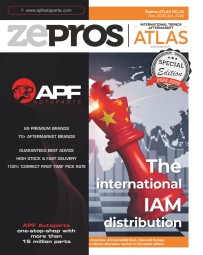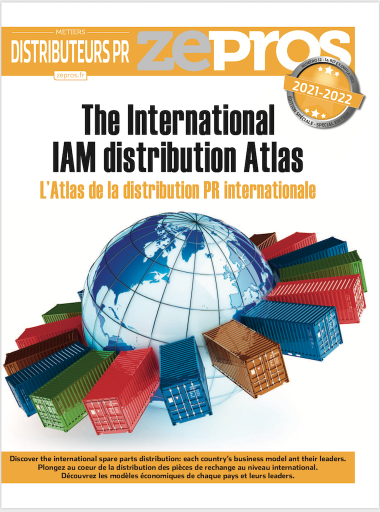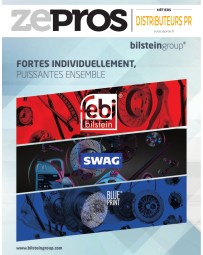
[Atlas] TMD FRICTION : “Shortages have reshuffled the pack”

Clément de Valon, TMD Friction executive Vice President Independent Aftermarket, takes stock of the past two years and gives to Zepros his vision for the future.
How was 2021 for TMD Friction?
Clément de Valon: An exceptional vintage that surprised us with its size! In our forecasts, we expected to reach 2019 levels, in fact 2021 will end up with an increase of over 10% in cars and LCVs. The vitality of the HGV sector is even more spectacular, here the increase is 20% compared to 2019.
What factors are accelerating demand?
C. de V.: As early as 2020, we anticipated the recovery by increasing our stocks by 40%. This strategy, combined with the strength of our product offer, gave us the base to better support the resumption of activity by our distributor clients. TMD Friction’s policy has always been to give its best to distributors. Here, TecDoc recognises an exceptional coverage of 99.6% for cars, LCVs and HGVs. We have also just completed a record year in terms of new products. We are adding 190 new brake pad references, 65 of which are first to market.
How do you expect to be out of the woods in terms of supply shortages?
C. de V.: It was unprecedented to see the crises in raw materials, energy and transport all at the same time and this prevented us from achieving our service rate targets. We are making every effort, in sourcing and in the supply chain, to minimise this problem being faced by all suppliers worldwide. There is some consolation as our distributors confirm every day that we remain, according to them, among the best in terms of service.
When do you see the end of the crisis?
C. de V.: We do not think we will see the end of the crisis before the second half of 2022 at the earliest. At best, 2022 will be a year of transition. The disruptions in the supply chain will last until the end of 2022. The price of containers, also in a short supply, jumped to $10,000-$12,000 at the height of the crisis and should only drop to $6,000-$7,000 at the end of next year. There are questions to be addressed about the relocation of production. But we remain active leveraging all our brands – Textar, Mintex, Don, Pagid, Cobreq, Nisshinbo and more recently, Bendix – which cover all our customers’ needs.
Are brands still an asset?
C. de V.: Whatever the market, manufacturers favour products with high margins as production restarts. At a time when they must cushion the sometimes-explosive increases in their costs, without being able to meet all the demand, they have little choice but to favour the production of products with sufficient margin. Shortages have reshuffled the pack. This inevitable and probably lasting rise in costs, and therefore prices, will trickle down to consumers. In this context, the reassurance of a strong brand can play an explicit role in consumers accepting increases. The need for profitable production, on the other hand, can have effects on the production of private label, which are currently the most under pressure.







